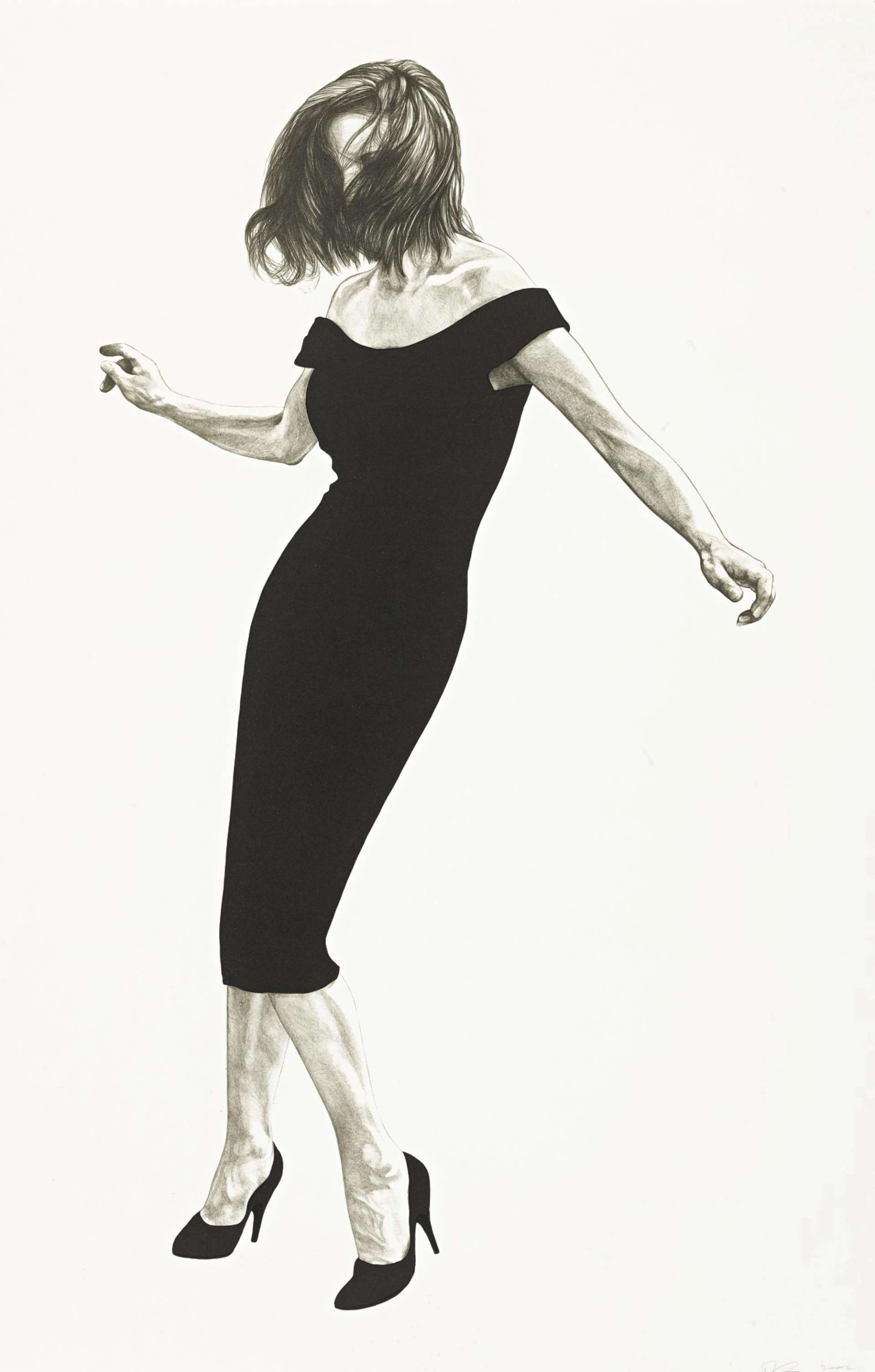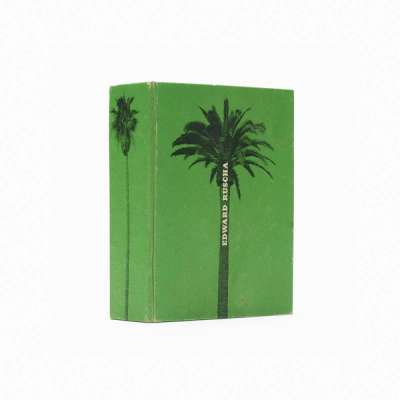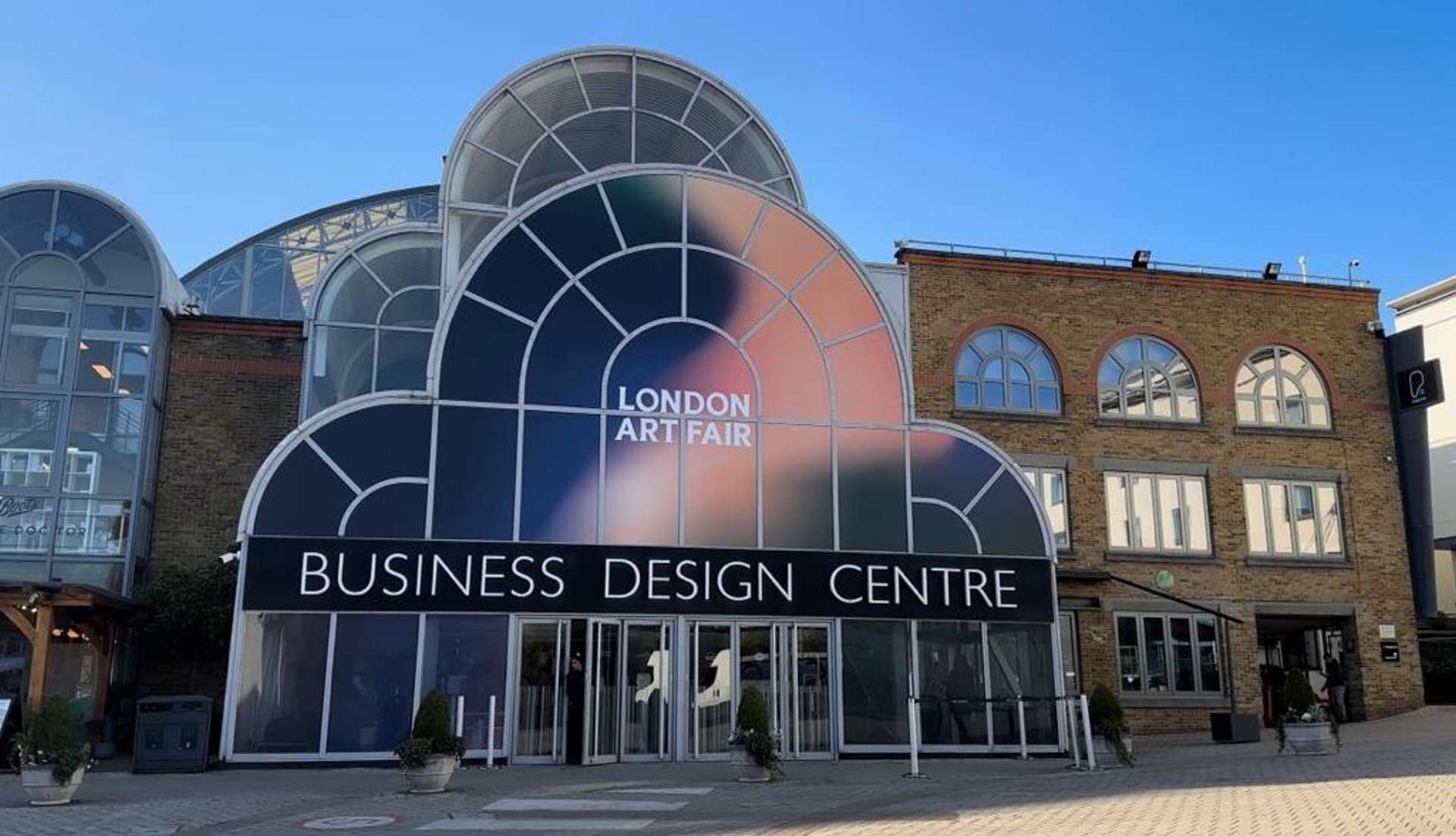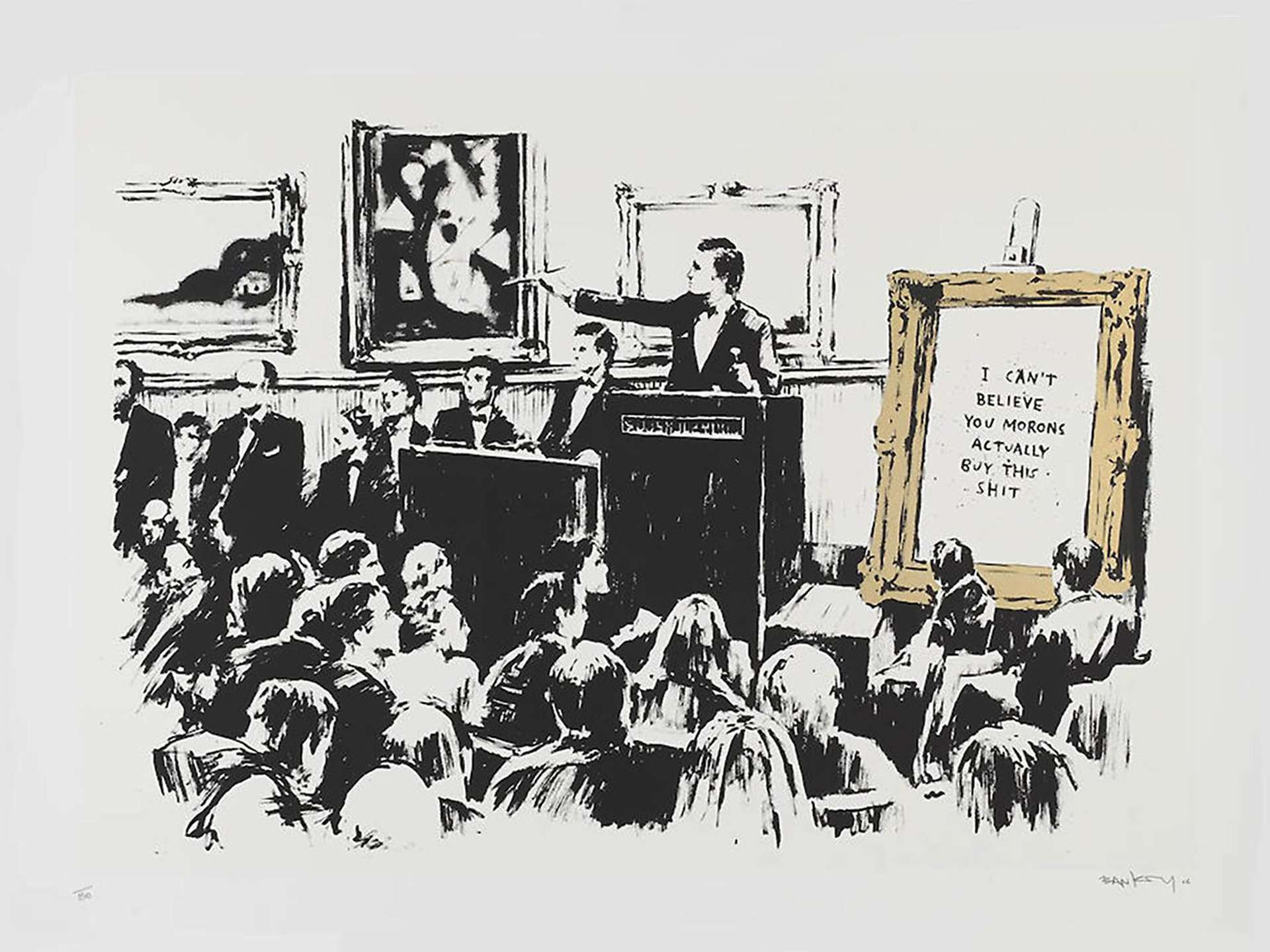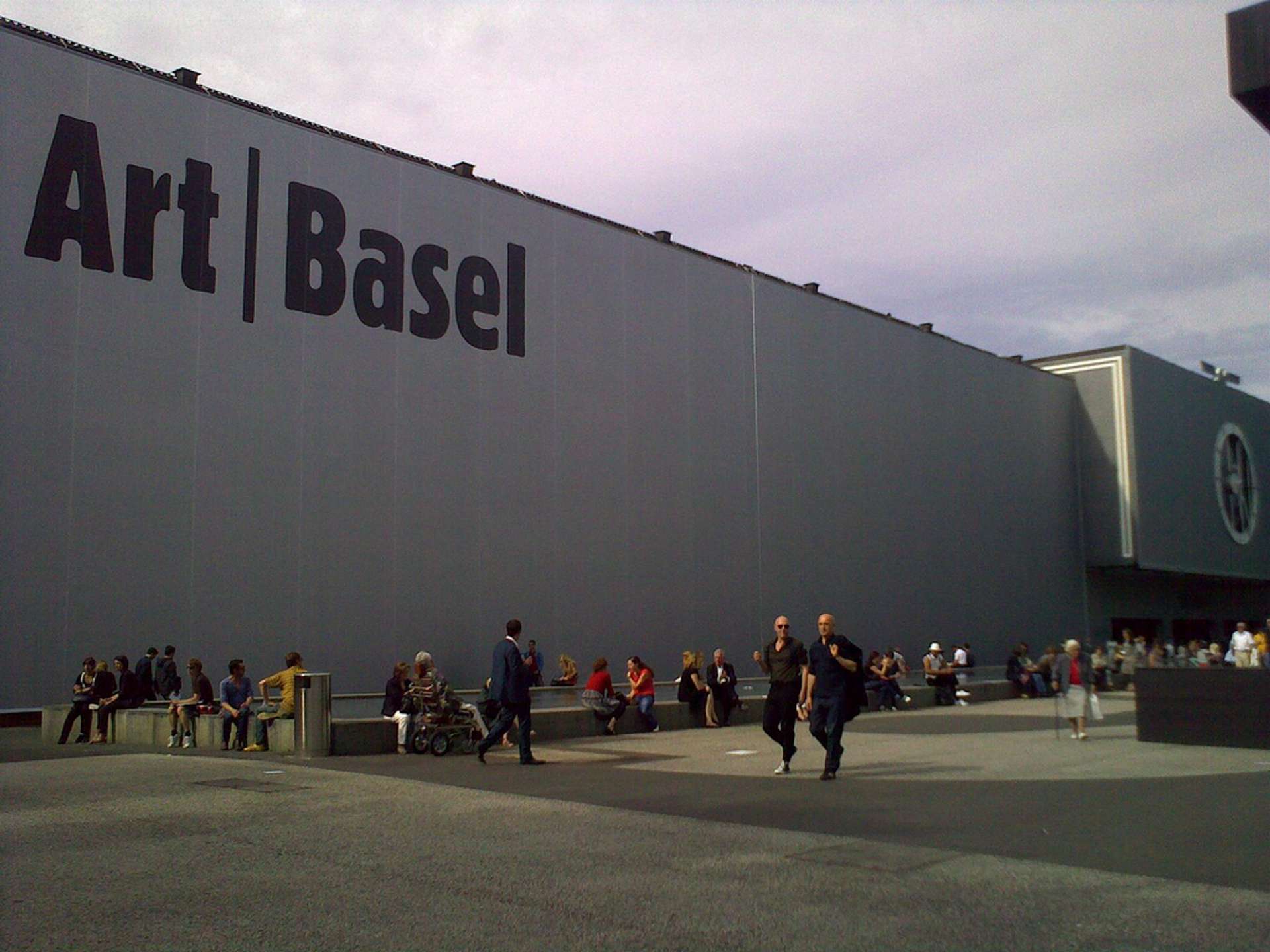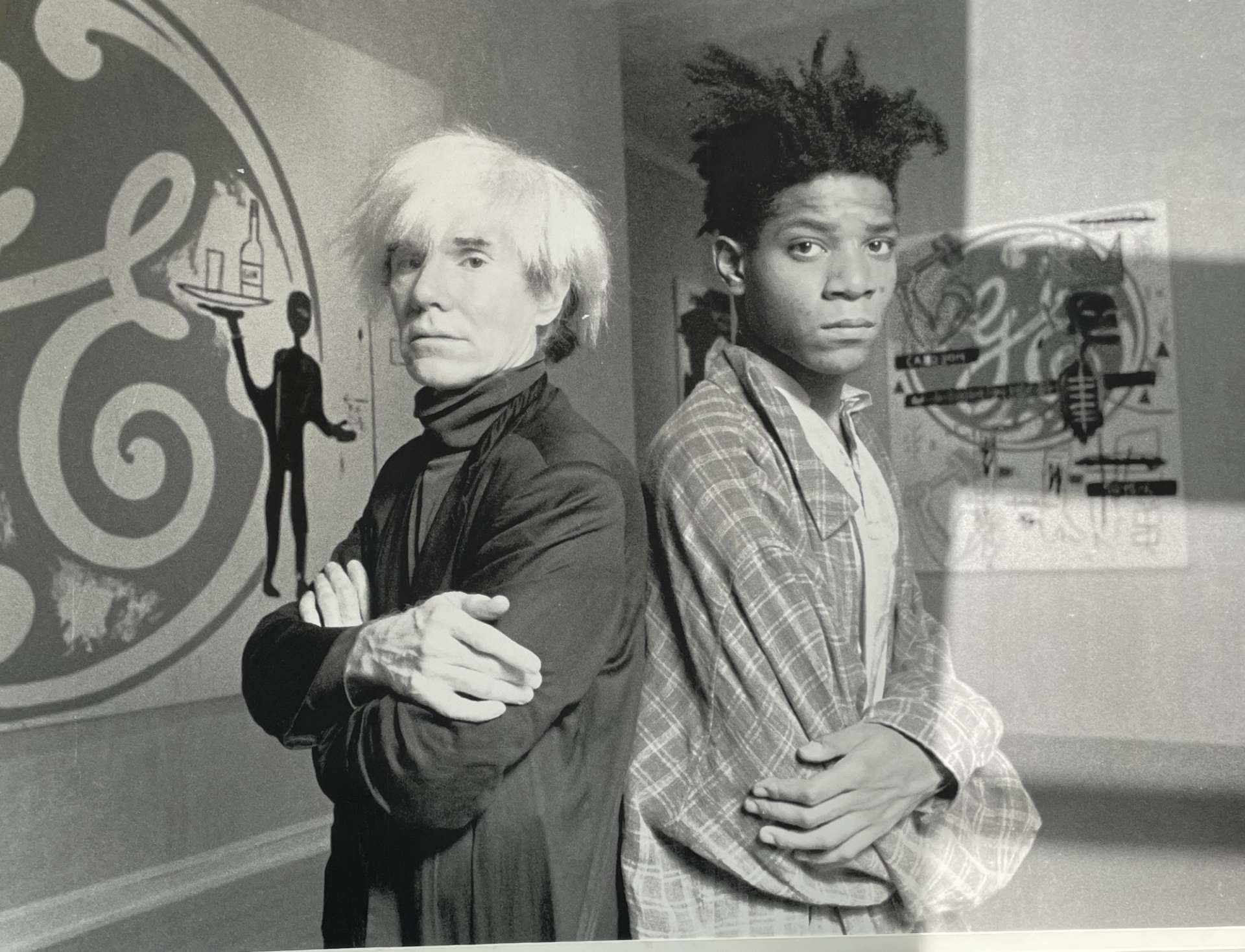 Image © Creative Commons via Wikimedia Commons / Kassel Documenta 7, August 1982
Image © Creative Commons via Wikimedia Commons / Kassel Documenta 7, August 1982The documenta 7 was a monumental event in the world of art, held in Kassel, Germany between 19 June and 28 October 1982. The documenta has historically been a platform where new art movements and visionary artists emerge, shaping the trajectory of modern art. Documenta 7, in particular, showcased a diverse range of groundbreaking works, reflecting the dynamic nature of 1980s art and projecting dozens of artists to perpetual notoriety. The influential pieces of this pivotal exhibition served as a bellwether for emerging trends and the future direction of the global art scene well into the 21st century.
The documenta 7 was curated by Rudi Fuchs, and featured 182 artists. Fuchs aimed to reestablish the dignity of contemporary art by focusing on its aesthetic independence rather than its socio political impact. This approach marked a departure from previous documentas that emphasised art as a medium for social change. Fuchs's exhibition, devoid of a formal title or theoretical framework, leaned on poetic metaphors and highlighted traditional values like beauty and artistic individualism. He predominantly featured large-scale paintings and sculptures, reducing the presence of Conceptual and Performance art. Notably, only one video installation was presented, contrasting with the trends of the time. For this, it has been criticised as lacking in sufficient innovation, favouring more established artists instead. This shift towards conservative values in art coincided with broader societal changes in the early 1980s, including the start of Helmut Kohl's tenure as Chancellor of Germany and a move away from the revolutionary ideals of the 1960s and 1970s. This period also saw a resurgence in the importance of museums and the rise of a thriving international art market that favoured more conventional, saleable artworks.
The documenta featured artists such as Cy Twombly, Ed Ruscha, Francesco Clemente, Gilbert and George, and Robert Mapplethorpe. Other highlights included:
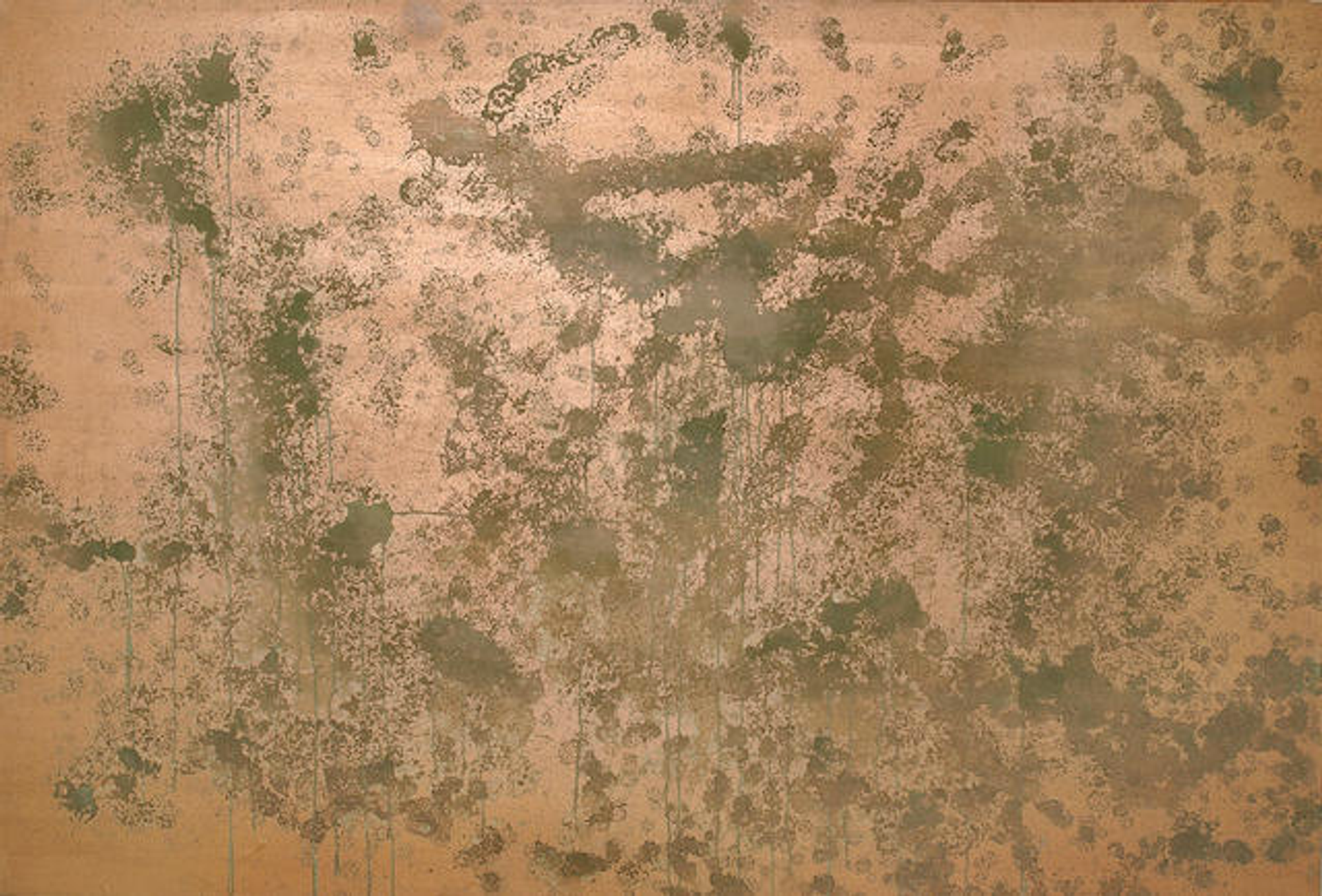 Image © Bonhams / Oxidation Painting © Andy Warhol 1979
Image © Bonhams / Oxidation Painting © Andy Warhol 1979Andy Warhol
For his part in the show, Andy Warhol sent three of his Oxidation Paintings, declared “among the rare pleasurable exceptions to the generally sombre and pompous offerings of the exhibition.” The paintings were created by covering the canvases in copper paint, which was then urinated upon by his assistants. The acid from the urine oxidised the metal in the paint, creating a shimmering effect. Bob Colacello, documenter of The Factory, said Warhol saw the works as a parody of Jackson Pollock, exactly the sort of tongue-in-cheek nod that the documenta 7 was accused of lacking.
Donald Judd
Judd created a large outdoor sculpture at Kassel, a three-dimensional, open-ended parallelogram made of moss-covered weathering steel, featuring internal straight divisions forming a rectangular base. It echoed the elegant linearity of traditional Japanese architecture and was subtly integrated into the park. The sculpture interactively engaged with its environment and the viewer's perspective, appearing as a silhouette from angles and under specific lighting conditions. From other angles, its central part seemed to dissolve, creating an illusion of openness to the elements and the changing sunlight. Standing at about six feet tall, it invited people to walk through, fostering a sense of gentle surprise in this unexpected interaction.
Gerhard Richter
At Documenta 7, Gerhard Richter presented a collection of striking abstract paintings characterised by vibrantly sharp colours, energetic brushwork and a sense of depth that echoed Expressionistic techniques. These paintings were strategically placed throughout the exhibition, trying to evoke conversations with other works. This enhanced the dominant theme of the event, which in itself emphasised the compelling nature of painting as an artistic medium.
Jean-Michel Basquiat
Jean-Michel Basquiat was the youngest-ever artist to exhibit at documenta, aged only 21, and had three paintings featured, including Arroz Con Pollo. 1982 was a pivotal year in Basquiat's career, marking his meteoric rise to fame in the art world. This period saw him produce some of his most significant works, which have played a crucial role in establishing his legacy as a leading figure in contemporary art.
Keith Haring
In another example of how the documenta 7 prioritised paintings, Keith Haring submitted canvases for the show. He prefaced his own writings in the exhibition catalogue with a quote from Jean Dubuffet: “Painting has a twofold advantage over the language of words. First of all, painting conjures up objects with greater strength and gets much closer to them. Secondly, painting opens up a bigger door outside to the inner dance of the painter’s world of ideas.”
Haring also contributed to the Fashion Moda section – a store present within the fair, in an early iteration of the Pop Shop. He created “radiant baby” and “barking dog” buttons, which were sold by the handful at one Deutschmark each.
Marina Abramović
Marina Abramović was there in a duo with Ulay. Their performance at the documenta 7 was a natural progression from their earlier task-oriented ones, transformed into a mix of therapeutic alchemy and ceremonial meditation. This ritual, which took over the Orangerie's dome-shaped room, was open to audiences but not reliant on them. Seated at a polished table's ends, distanced from viewers separated by a slender rope barrier, they created a serene yet powerful scene. A nearby water cooler with gold leaf sediment offered a note about the purifying qualities of gold and was available to visitors. In this setup, Abramovic and Ulay remained still and engrossed, facing each other in a series of day-long sessions – a motif they would famously replicate in The Artist Is Present.
Robert Longo
Robert Longo sent one of his dancing figures from the Men In The City series, titled Final Life II. The works from these series would become emblematic of the 1980s, depicting men and women in business attire in exaggerated, contorted poses, either dancing or seemingly falling. These larger-than-life figures, drawn in monochrome, strike a contrast between their dynamic movement and formal clothing, reflecting a critique of the tension in the modern, capitalist world of the 1980s. This theme resonated in popular culture, notably in film, where it has often underscored themes of power and toxic urban lifestyles. The piece was placed in conversation with other monochromatic works in the documenta 7, again fostering a sense of conversation between artists.
The Enduring Impact of the documenta 7
While documenta 7 initially faced criticism for its perceived lack of experimentation, the exhibition has proven to be enduring in its influence and relevance. The themes and motifs presented by the artists have not only stood the test of time but have also paved the way for enduring success in their careers. The fair showcased works that, in retrospect, were at the forefront of shaping contemporary art trends, affirming its significant role in the evolution of the art world.
There are many instances of notable contributions of artists whose work at the fair foreshadowed their future successes and lasting influence in the art world. Haring's participation in the Fashion Nova section, for instance, served as an early precedent for his iconic Pop Shop. Longo's captivating dancing figures showcased at the fair continue to resonate with contemporary visual culture. Abramovic later achieved viral fame for a performance with Ulay, reminiscent of the powerful work she presented at the fair. Basquiat, the youngest artist at documenta 7, has posthumously become one of the most successful and influential artists of all time.
Overall, Documenta 7's ability to identify and present artists who would achieve enduring success and redefine artistic norms speaks to the exhibition's far-reaching and lasting influence in the realm of contemporary art. The artists' contributions continue to resonate, demonstrating the exhibition's lasting impact and foresight in recognising and presenting pivotal artistic developments.




